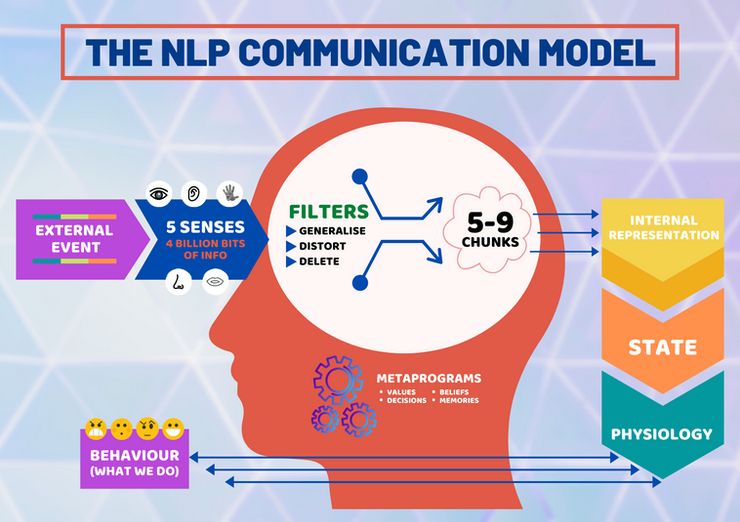When it comes to understanding how we create our reality, as an NLP Master Trainer, I always refer back to the NLP Communication Model.
Originally conceived and developed by John Grinder and Richard Bandler, NLP or Neuro-Linguistic Programming began as a model on how we communicate and interact with ourselves and others. The NLP communication model explains how we process the information that comes in from outside and what we do with it internally.
One of the NLP presuppositions states that “the map is not the territory,” so the internal representations that we make about an external event are not the event itself. What happens is we run the external event through our internal processing. We make an internal representation of that event which combined with physiology creates a certain state.
The word ‘state‘ refers to the internal emotional state of the individual, i.e. happy, sad, motivated, etc.
Have you ever noticed that people treat their perceptions differently? Some people have to ‘see’ certain relationships between things, where others need to have it explained so they can ‘hear it’. Still, others have to ‘get a feeling’ for the relationships.
This is the essence of how we create our subjective experience. Why subjective? In the view of NLP, whether or not there is an objective absolute reality, individuals do not have access to absolute knowledge of this reality and instead can only access a set of beliefs and experiences they have built up over time.
Sensory input channels
Our internal representations include internal pictures, sounds and dialogue, feelings, tastes and smells. So, an event, therefore, comes in through our sensory input channels, which are: visual, auditory, kinaesthetic, olfactory and gustatory (VAKOG).
- Visual: Includes the sights we see or the way someone looks at us.
- Auditory: Includes sounds, the words we hear, and the way people say something to us.
- Kinaesthetic: Internal or external feelings which includes the touch of someone or something, pressure, and texture as well as our emotions.
- Olfactory: Smell or the faculty that enables us to distinguish scents.
- Gustatory: Taste or the faculty of distinguishing sweet, sour, bitter and salty properties in the mouth.
Join my growing community of students on Udemy.


